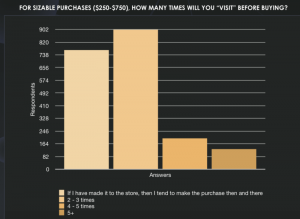— April 5, 2018

When attempting a successful CRM implementation, you might face many key challenges like data integrity, manual data entry, low user adoption, and others. Without a game plan to address these challenges, you can expect your CRM’s usefulness to dwindle.
Fortunately, there are several CRM drills and plays you can use to help your sales or business development team turn more contacts into clients. These best practices are not only designed to help keep your data clean, but also boost CRM adoption within your firm so you can get the greatest ROI from your CRM investment.
As a provider of CRM data automation, we have an on-the-field access to the most successful CRM users and what they are doing to get the most value out of their system. Below, we detail those CRM best practices and how they can help you tackle any adoption challenges you might face.
1. Practice Makes Perfect
The first best practice on this list might seem like an obvious one, but considering that less than 40% of businesses have a CRM adoption rate of over 90%, it bears mentioning. Simply put, regular use of the CRM system is needed if you want to get the maximum ROI from your CRM investment.
At first, maintaining data in the CRM will come with a learning curve and behavioral changes will need to be made to maximize adoption. Everyone on the sales or business development team should be spending time daily updating tasks and activities that are tied to accounts and contacts. With regular use, your team can become more aware of their strong (or weak) prospect relationships and what it will take to close a deal, or progress a deal further along in the buyer journey.
2. Don’t Drop The Ball
Leads are the life force of every organization. Without leads, there are no Marketing Qualified Leads (MQLs), Sales Qualified Leads (SQLs), opportunities, or deals. A major process gap for most sales and marketing organizations is that their lead flow process isn’t directly integrated to their CRM, leaving room for leads to fall through the cracks, never to be heard from again.
If you have a process in place today that requires leads to be bulk imported or manually entered by sales or marketing, this process needs to be automated ASAP. Almost all cloud based technologies today support an application program interface (API) that makes communication between lead capture platforms and CRM an easy process. Basically, an API specifies how software components should interact when sharing data. Yes, there are typically technical hurdles to jump through, but nothing a good old YouTube tutorial video can’t fix.
3. Gear Up With New Tech
Building off of our manual data entry soapbox, the No. 1 complaint of CRM end users is that there’s too much manual data entry. This manual process of entering, maintaining, and analyzing client data ultimately pulls your sales or business development team away from actively engaging clients and sucks them into non-productive CRM-based activities. When this happens, your “data consumers” become “data producers.” That’s not what you want.
Not to beat a dead horse, but to save valuable time and allow your sales team to spend more time nurturing relationships, you need to be turning to CRM automation. By powering your CRM with data automation your company’s leads, customers, communications, etc. are entered, updated, and analyzed automatically.
4. Coach Up Your Team
A shocking 22% of salespeople don’t even know what a CRM is, according to HubSpot’s State of Inbound Marketing 2016. It’s safe to say that training and user on-boarding is a must for any organization that hopes to drive user adoption of their CRM system. A good process to adopt post-launch of your CRM is to host a monthly training session where users can explore features and functionality with an in-house administrator. By hosting a dedicated forum for questions and answers, you can encourage your team to invest time learning best practices in the application.
5. Organize Your Playbook
To protect the integrity of your CRM data, it’s important that all accounts, contacts, leads, and opportunities are assigned to an owner. If your CRM is being used as a data dumping ground for random contacts or accounts, you will lose control of your data quality which can be costly to the business over the long run. To avoid a chaotic and messy data management experience, your organization should sort and segment all accounts and contacts so they are clearly owned by a specific user or department in the CRM. When it comes to sales pipeline management, segmenting your clients by stage, location, contact demographics, deal size, and more, your CRM will be positioned to provide key insights into how your leads and end customers are influenced throughout the buyer journey.
6. Set up a Strong Kick off
Personalized content and communications have been found to result in a 6x higher transaction rate, but only 70% of brands take advantage of personalization. If your marketing and sales teams are using CRM correctly, there will be a wealth of demographic insights and behavioral information that can be leveraged to target and market to contacts with greater personalization. Instead of sending out generic mass emails to your leads and prospects, you can adopt an account-based marketing (ABM) strategy to maximize prospect and customer engagement.
7. Rally Your Fan Base
Social selling is a leading tactic for capturing and nurturing leads. In fact, 78% of salespeople using social media to sell, outperformed those who don’t use social media. However, because social selling requires your business development team to leverage their own personal networks, they can be a little hesitant to embrace it.
To address this, organizations are connecting their CRMs to social networks with tools like relationship intelligence automation. Through this process, your CRM can create relationship maps of your team’s social networks as well as your clients’ to find common connections that uncover new opportunities. By automatically identifying social connections and relationships, your sales or business development team will feel more confident in engaging and recommending introductions.
8. Drills. Drills. Drills.
If your salespeople are not aligned around a unified process, odds are your CRM data will quickly erode and deteriorate. Prevent your team from muddling the system by defining clear processes and workflows for everyone to follow. CRMs today also have the ability to require certain data before updates can be made in the system. By requiring a certain level of information in your CRM, you can control the overall quality without having to micromanage teams.
With a set process, you can rest assured that each account and contact stored in your CRM has the same level of information and detail. Should someone on your business development team leave your organization, this also helps ensure tribal knowledge surrounding certain accounts isn’t lost, so that new hires can get acclimated with the system quicker.
9. Study the Tapes
Capturing data is like getting a first down. Leveraging that data to produce insights that can support data-driven decision making is like scoring a touchdown. Most CRM systems come with standard, out-of-the-box analytics and reporting, but not all reporting is created equal. You’ll want to explore creating dashboards, leaderboards, trendlines, and other types of analysis to capture how your organization is measuring up against targeted goals.
Creating a regular cadence to review reports and analytics is also critical to the process. If you’re not reviewing these reports on a regular basis, you could be missing out on important trends and opportunities to optimize your sales and marketing process. To take analytics a step further, varsity-level organizations are bringing together relationship analytics and their CRM to provide a relationship score for each account, allowing them to maximize upsell and cross sell opportunities.
10. Huddle With Your Team
For your best chance at successful CRM adoption, show your team that you’re actively involved with its use. Ask them frequently for their feedback on how to improve the system and make it more helpful for them. As long as you continue to show interest in making CRM better for them, your sales or business development team will as well.
Business & Finance Articles on Business 2 Community
(74)
Report Post






